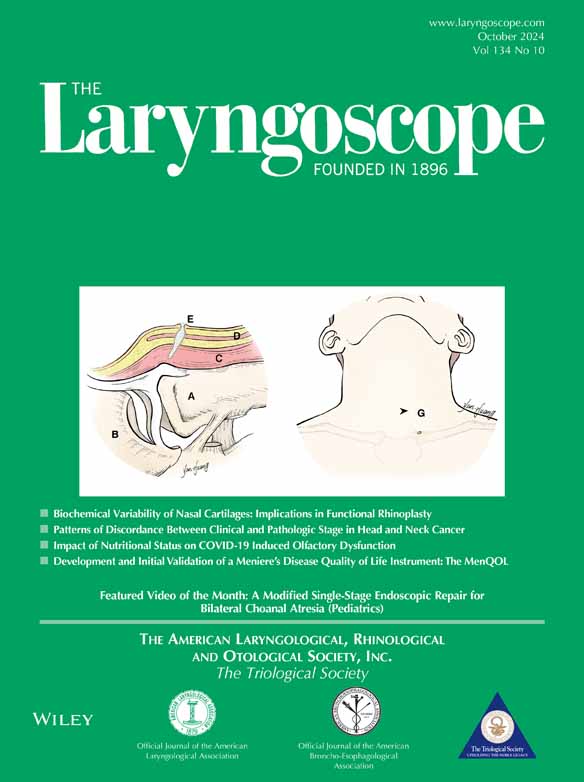Next-generation Sequencing of MicroRNA in Acquired Middle Ear Cholesteatoma
The authors have no funding, financial relationships, or conflicts of interest to disclose.
Abstract
Objectives/Hypothesis
The pathophysiology of cholesteatoma is not precisely understood, and research on the associated microRNAs (miRNAs) is also deficient. We demonstrated the expression of miRNA in normal skin and middle ear cholesteatoma by next-generation sequencing (NGS) technology. The profiles of miRNA and relevant molecular interaction pathways were investigated.
Study Design
Case–control experimental study.
Methods
Middle ear cholesteatoma and post-auricular skin tissue specimens were collected from 13 adult patients. Total RNA was extracted, and miRNA expression profiles were analyzed by NGS technology. Functional gene classification to predict target genes and relevant biological pathways was performed using DIANA-microT-CDS and the Kyoto Encyclopedia Gene and Genome database (KEGG) pathways.
Results
The expression of 2588 miRNAs from middle ear cholesteatoma and skin tissue samples was analyzed. The expression of 76 upregulated and 128 downregulated miRNAs was identified in the cholesteatoma samples compared to normal skin (FC ≥2 and p < 0.05). Ninety-nine differentially expressed miRNAs (FC ≥4 and p < 0.05) were used to explore the biological pathways involved in the etiopathogenesis of cholesteatoma. The most predicted pathway in cholesteatoma in the upregulated miRNA group was the ErbB signaling pathway and it was extracellular matrix (ECM)–receptor interaction in the downregulated miRNA group.
Conclusions
This was the first study investigating small miRNAs in human acquired cholesteatoma using NGS technique. We were able to identify new miRNAs and pathways related to cholesteatoma. The results of this study are expected to be helpful in revealing new pathophysiologies of cholesteatoma.
Level of Evidence
N/A Laryngoscope, 134:4374–4382, 2024




